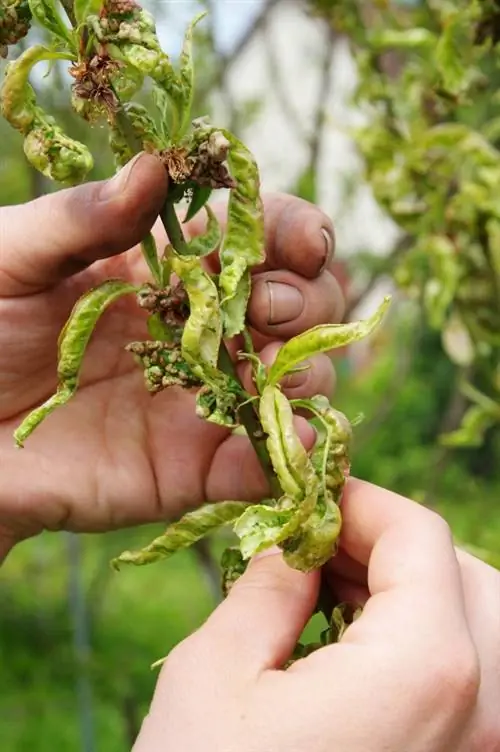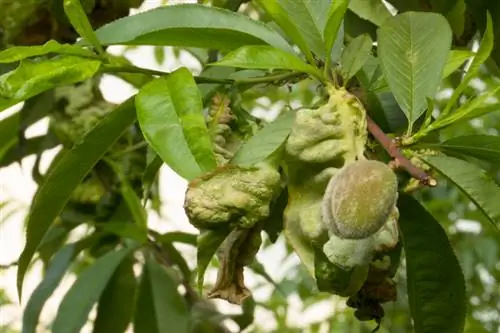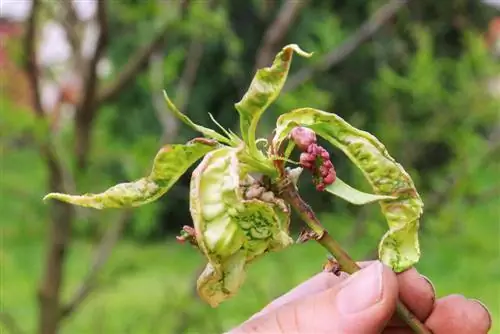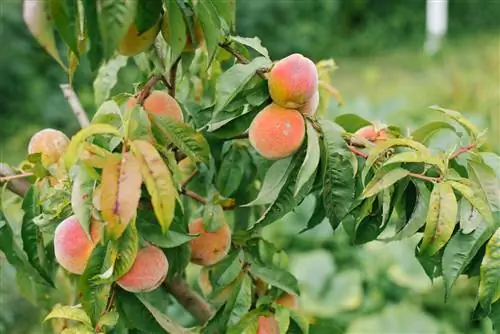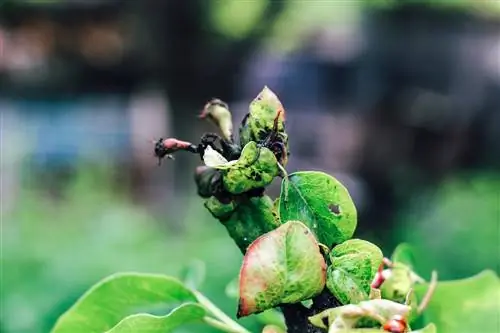- Author admin [email protected].
- Public 2023-12-16 16:46.
- Last modified 2025-01-23 11:19.
The curling disease caused by the ascomycete fungus Taphrina deformans is very common in peaches. The disease weakens the plant, leading to reduced growth and crop loss. Once the disease has broken out, it can no longer be combated during the current season. Only preventive measures are effective.
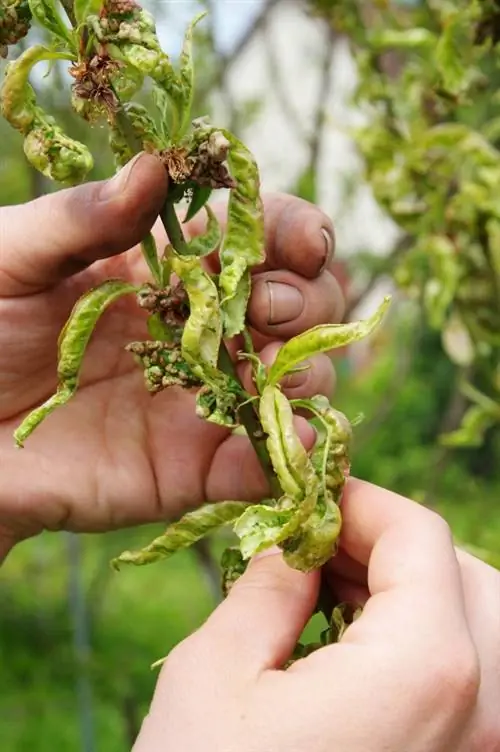
How do you prevent curl disease on peaches?
Peach curl disease is caused by the fungus Taphrina deformans and manifests itself in curled leaves and weakened growth. Preventive measures include choosing a sunny location, regular pruning, preventive spraying and selecting resistant peach varieties.
Curling disease leads to leaf loss
The pathogen fungus usually nests in the leaf and flower buds of peaches, nectarines, apricots and almond trees in wet winter months. As they sprout, the leaves curl - at this stage they are easily confused with an infestation of aphids - and eventually develop yellow-green to reddish discoloration and blisters. As the disease progresses, the peach tree sheds the diseased leaves and weakens because sufficient photosynthesis is no longer possible. In some cases, branches are also affected, which then die and have to be cut out. Fruits, on the other hand, are rarely affected.
Curly disease has serious consequences in the following year
However, the consequences of this fungal infection are much more serious the following year: Newly grown shoots appear compressed, leaves hardly develop and if they do, they are stunted. Flowers and fruits are also rarely set and if they are, they fall off again after a short time. The causative fungus Taphrina deformans, genetically related to the causative agent of plum disease, overwinteres as a fungal network (mycelium) on the branches, twigs and buds of peach trees. As soon as it gets warmer (around 10 °C), the mycelium breaks down into tiny cells that are washed into the buds by rain and infect them. As the process progresses, the new shoots will eventually also be affected.
Prevention through the right location
The most important preventive measures include choosing the right location. Peaches are sun worshipers, so they need a sunny and wind-protected place in the garden. Since the fungus is spread primarily through rainwater penetration, the peach tree should, if possible, be planted in a place protected from rain - e.g. B. under a roof. However, it is important to note that this must not cast any shadows. In addition, the crown should be kept as light as possible through regular pruning so that the leaves dry off more quickly after a rainstorm. Regular but moderate fertilization strengthens the resistance of the peach tree.
Protectively spray in spring
The curl disease can only be treated as long as the buds have not yet broken open - so measures after flowering or the appearance of the first symptoms are simply ineffective. Instead, preventive treatment should be carried out from mid to late January, but no later than February (depending on the weather). Proceed as follows:
- Remove so-called fruit mummies as well as infected leaves and shoot tips
- Spray the entire tree canopy with antifungal products
- repeat this at least three times, approximately 10 days apart
- Recommended products are Compo Duaxo Universal Mushroom-Free (€22.00 at Amazon) and Neudo Vital Fruit Spray
Prevention through resistant peach varieties
Since prevention is better than cure, you should, if possible, plant peach varieties that naturally have a higher resistance to curling disease. Basically, all white-fleshed varieties are less susceptible to disease, as they were mostly bred for cultivation in our latitudes. Suitable varieties include
- Benedict
- Amsden
- Revita
- Red Vineyard Peach
- Saturn
- Alexandra Zainara
Tips & Tricks
Proper watering prevents diseases, do not spray leaves with water, just water the soil.

